Jean-Luc Dinsdale has been working in visual effects for about thirty years. He has worked on a wide range of shows such as The X-Files, Smallville and Arrow. He joined Digital Domain in 2018.
What is your background?
I started my career working as a cinematographer and camera assistant before focusing on visual effects for MGM’s Stargate SG-1. Over the last thirty years, I’ve worked on numerous feature films and episodic projects like The X-Files, Smallville and Arrow. My most recent project for Digital Domain was as VFX supervisor on Marvel Studios’ Loki.
How did you and Digital Domain get involved on this show?
Digital Domain was originally approached by the Loki VFX team from Marvel Studios in January of 2020, as they were preparing to go to camera. Digital Domain has a long history and a strong relationship with Marvel Studios, going back over a decade and involving multiple feature projects, and now episodics. At the time we were still working with them on WandaVision, and the work was turning out so well (it was recently nominated for an Emmy) that it was a natural fit for everyone involved.
How was this new collaboration with Overall VFX Supervisor Dan DeLeeuw?
Working with Dan DeLeeuw was a great experience. Dan worked with artists at Digital Domain before on previous projects, so our relationship with him, and our familiarity with Marvel Studios, gave us a clear understanding of what the expectations were. We were able to get up and running and quickly reach the look that Dan was expecting, both in terms of the concept work we sent him, and the actual shot work.
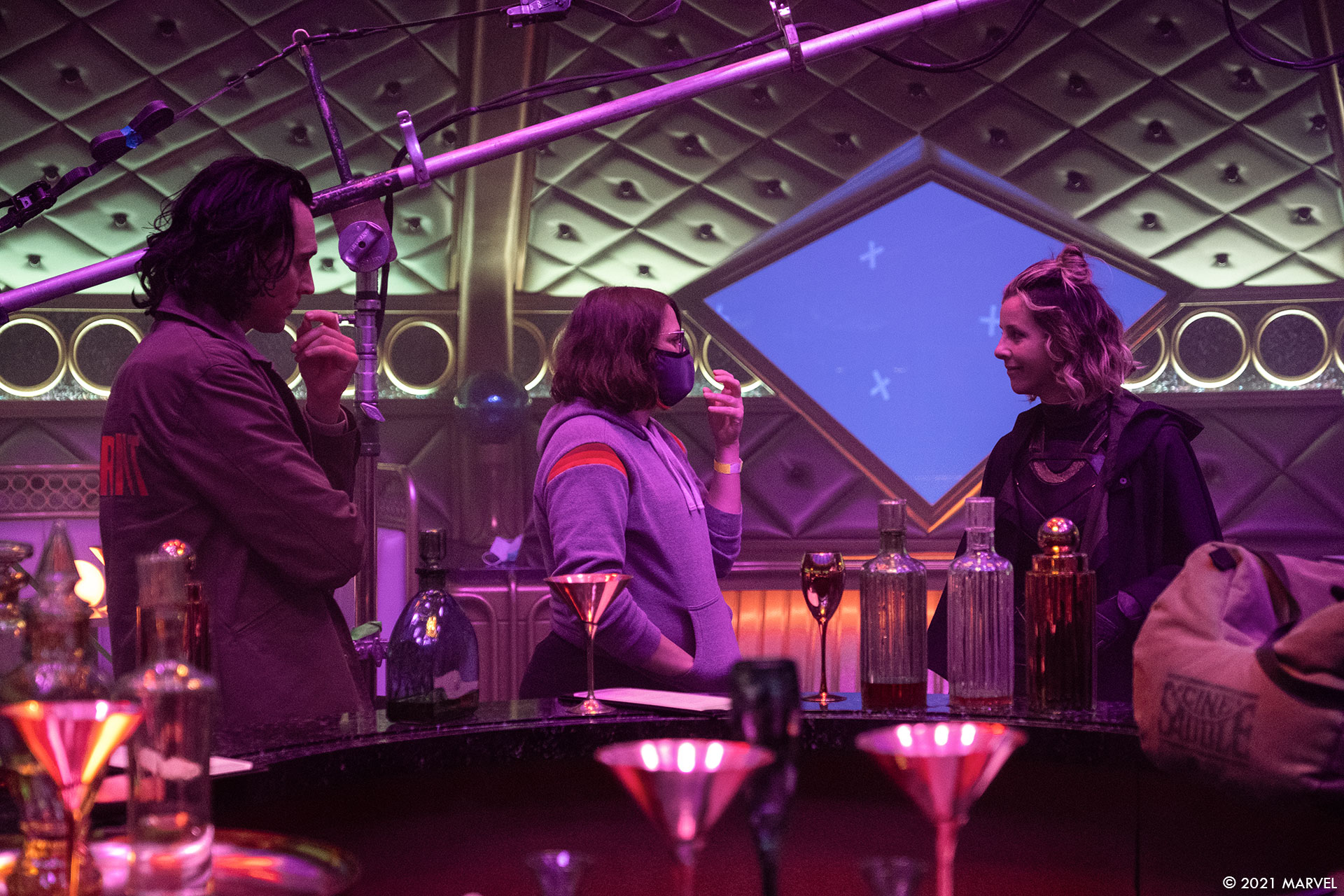
What were his expectations and approach about the visual effects?
Dan has a pragmatic approach to VFX, steeped in practical physics and grounded in reality, which appealed to our sensibilities. For example, while determining the color palette for the alien moon Lamentis-1, our Environments Department supervisor, Krista MacLean, determined that the colors should be procedurally generated based on science, rather than just “making it look cool.” Dan was in complete agreement, and we continued with this approach when we started working with Loki VFX supervisor Brad Parker.
How did you organize the work with your VFX Producer?
Digital Domain VFX Producer Gayle Munro is an extremely talented veteran in the VFX industry, and she was the perfect person for Loki. Due to the size of the project – at one point we were tracking almost 500 shots, spread across all five Digital Domain studios around the world – we organized our workflow so that Gayle and our production team would focus on the nitty-gritty of the production logistics. That allowed me to focus exclusively on our clients and our creative team.
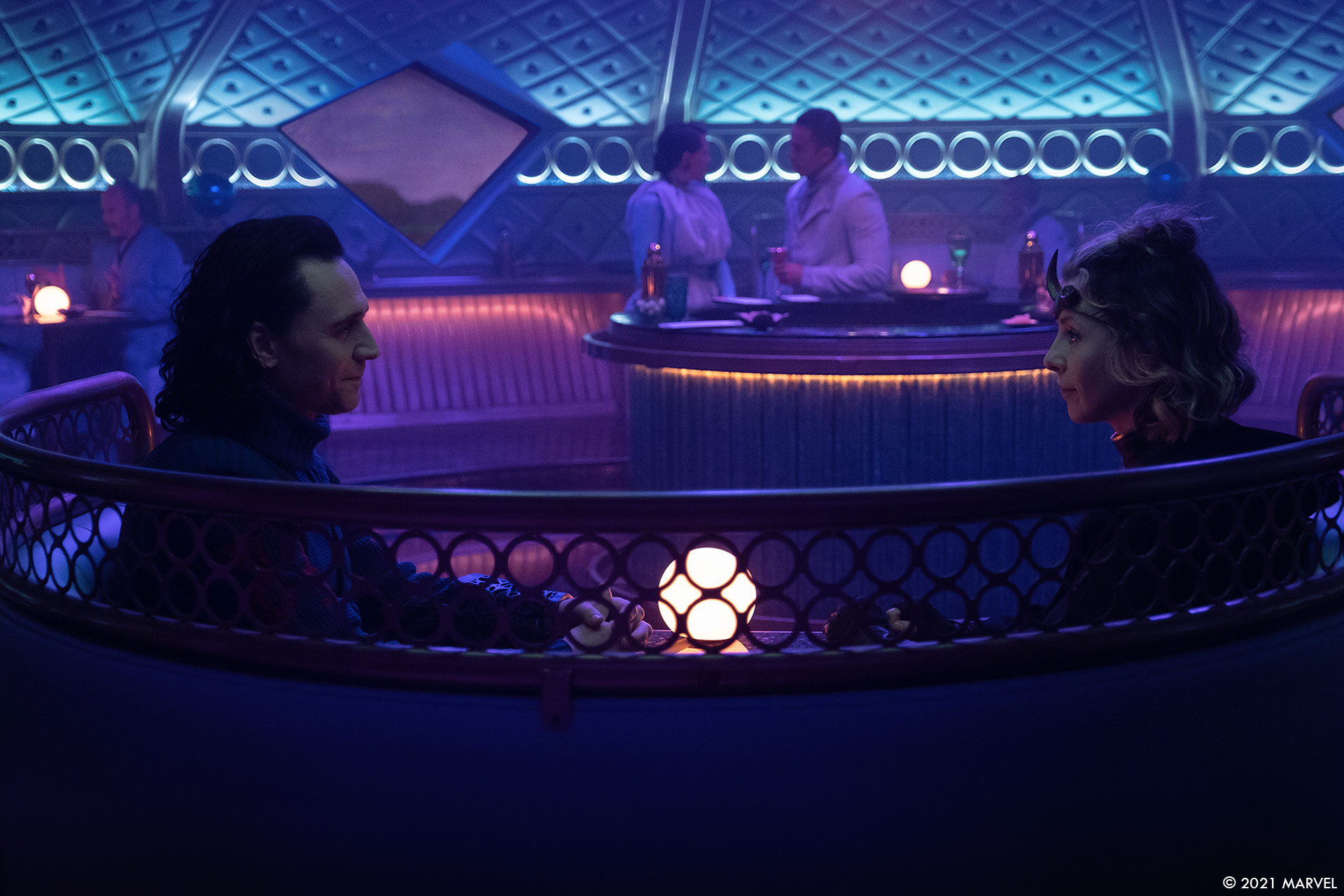
What are the sequences made by Digital Domain?
Digital Domain contributed to four major sequences in episode 103, “Lamentis.” We worked on the high-intensity meteor shower in a rock quarry at the start of the episode; an exposition sequence where Loki and Sylvie make their way to a train station via an abandoned mining town; a large sequence where Loki and Sylvie eventually get thrown off a moving train and head to the city of Shuroo; and the final scene where the planet above collapses and the city is destroyed around our heroes as they try to escape. We also contributed to several smaller sequences in episode 104 that take place at various locations.
How did you work with the art department for the design of Lamentis-1 and its city?
The filmmakers had a fairly set look and feel in mind from the start, and the Marvel Studios art department sent us several batches of concept and design work. Throughout the production, the landscape of Lamentis-1 remained mostly consistent. The city of Shuroo, however, went through a redesign midway through, prior to the completion of filming. Ultimately, we designed the dead planet of Lamentis and the color palette for the Lamentis-1 moonscape. We also helped to develop several of the series’ recurring VFX, including the “time doors” the TVA uses.
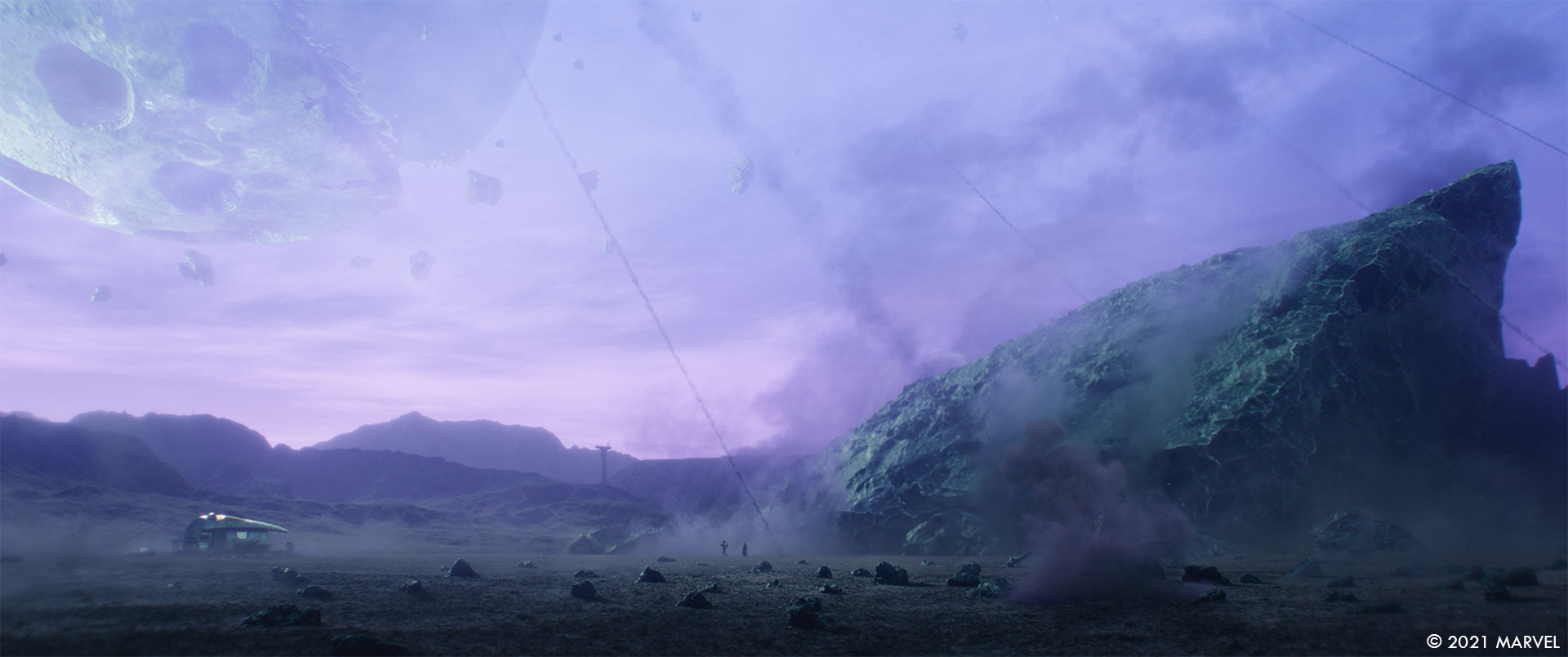
What kind of references and indications were used for Lamentis-1 and the city?
Marvel Studios’ art department provided traditional 2D concept sketches for all the major set pieces, characters and props. To create the look of the dead planet Lamentis, we utilized a lot of reference images showing real world strip-mining operations, atmospheric pollution, and panoramas of Death Valley, provided by the Loki VFX team. All the references for Shuroo were all concept sketches from the Marvel Studios’ art department.
Can you explain in detail about the creation of the moon and the city?
The creation of the Lamentis-1 “moonscape” fell to our environments team, led by Environments Lead Daniel Fernandez. Based on reference images of real world locations and concept artwork provided by the production, the moonscape was created using a mixture of CG assets and 2.5D matte painting and camera projections. Since the entire episode takes place on this alien moonscape, practically every single shot we delivered required environment layers.
The city of Shuroo was based on partial set pieces created by production and used in the actor plates. Because each structure was so unique, we ended up building most of the city by hand, relying on LIDAR data provided by the production. Our environments team split the work of building the assets for the city with our modelling team, led by Modelling Lead Katerina Dzolganovski.
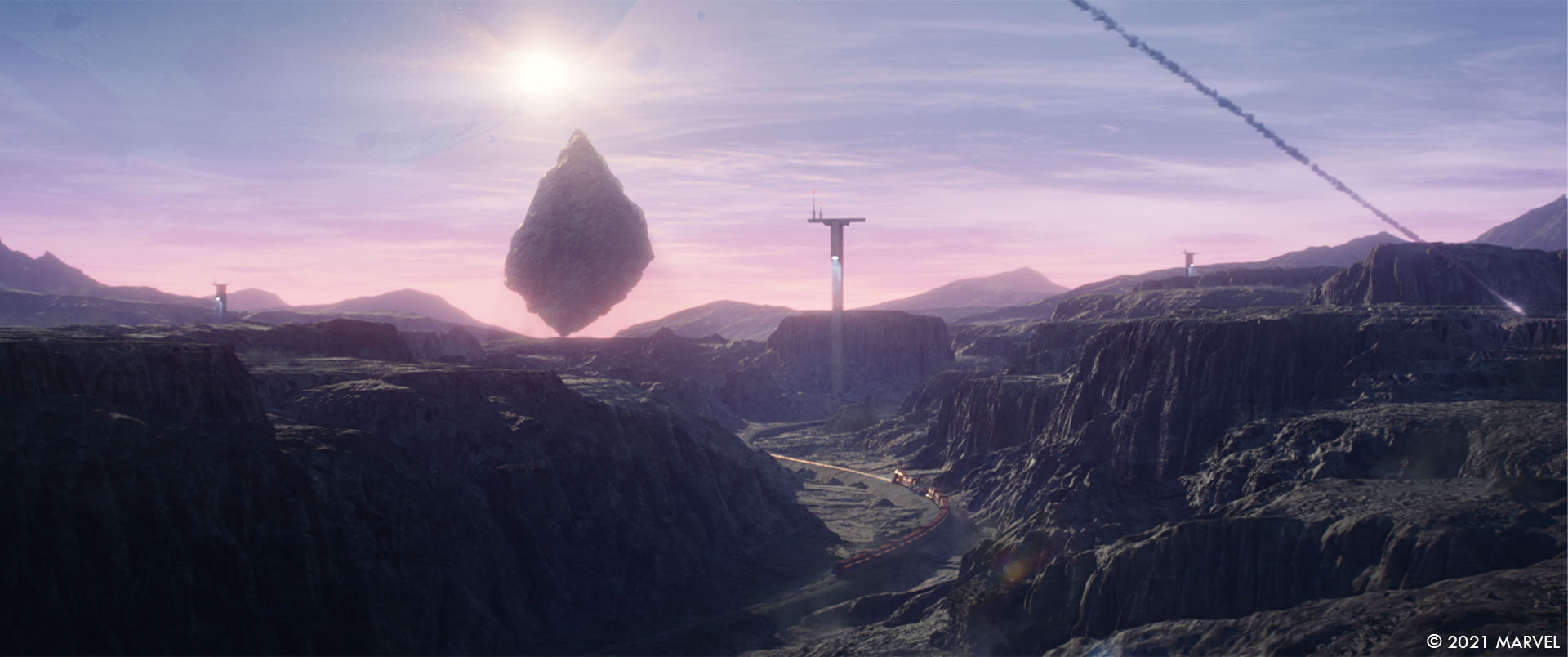
Where was filmed the sequences on Lamentis-1?
The rock quarry was shot at a practical location, while the remaining sequences were shot in and around the Trillith Studios in Atlanta, Georgia.
Did you use procedural tools to create them?
We used procedural tools throughout the production of Loki in different capacities – for example, procedural tools were used to detail the strip mining sites and the giant cracks and crevices on the surface of Lamentis.
The light is really special. How does that affect your work?
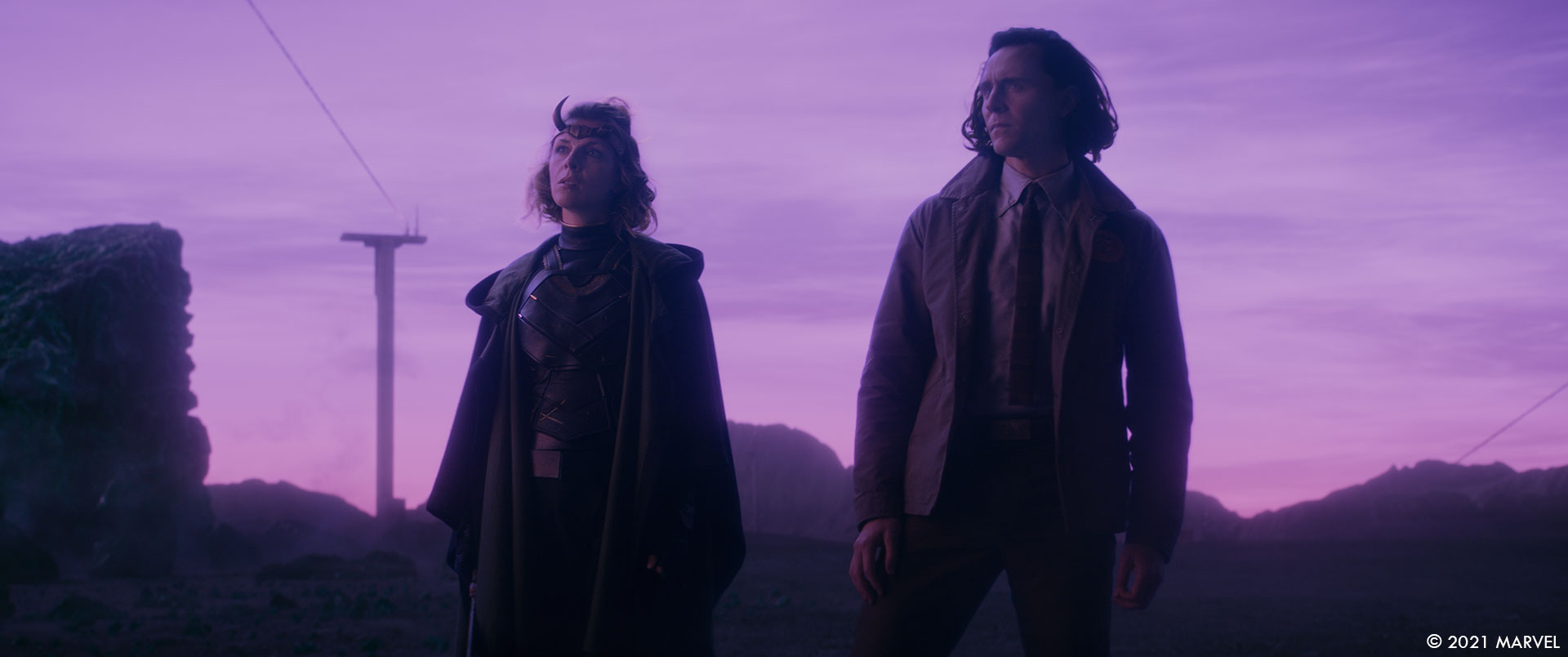
We knew going in that the episode’s color treatment would be unusual, but it wasn’t finalized until the last few weeks of VFX shot production, when our shot work was mostly complete. Compositing Supervisor Paul Chapman and Compositing Lead Rommel Shamoun devised a custom grading system to shift the grade towards the concept work we created, and provided the Digital Intermediate team everything they needed to match the director’s vision.
What was your approach for the destruction and the fall of countless meteorites?
We relied on a mix of procedural and manual techniques for the meteors. FX Department Supervisor Tom Nixon and his team began by developing the look of the meteors – including the quality of the trailing smoke, the properties of the impact and the ejection debris. They then tailored the look to match the dramatic impact required in each of our different sequences. Eventually, we had enough to create a full library of meteorites and meteor impacts to draw from. For final placement, we relied on a mix of bespoke meteor sims, manual placement and procedural placement of library elements, depending on the situation.
Can you elaborate about the Arc and the city destructions?
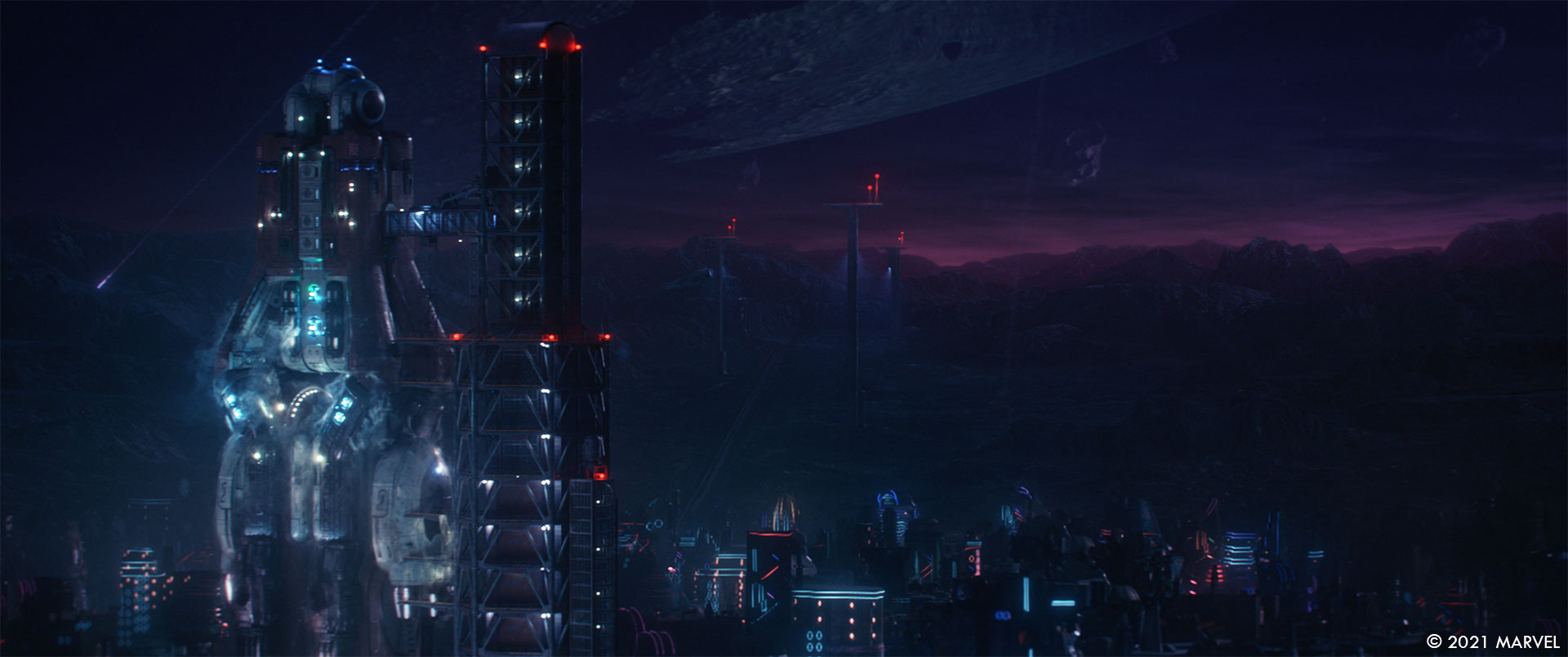
Destruction of hard bodied objects is one of the skills our FX team here at Digital Domain excels at. Thanks to that experience, we were able to complete our work and deliver screen-quality results fairly quickly. Generally, the events were initiated by a handful of specific beats – building pieces or meteors chosen to hit specific timing and placement – and a set of custom tools powered by Houdini were used to generate destruction elements and fill out the rest of the sequence.
Can you explain in detail about the creation and destruction of the massive planet?
To create the barren, green planet of Lamentis looming over the moon, we worked with the filmmakers on what the planet might look like, and went through several iterations, some of which were very different from the final version seen in the episode. We knew from the start that the planet was going to be seen at multiple distances and multiple angles throughout the episode, and that it would ultimately tear itself apart on camera. So we created assets that would be detailed enough – but still light enough – not to bring our render farm to its knees while maintaining a consistent look throughout.
Digital Domain CG Supervisor Attila Szalma worked with our modelling and FX leads to devise a new approach. An asset would begin in Maya and ZBrush, then using Houdini we were able to procedurally detail the cracks, crevices and mining sites on the planet surface.
When Loki and Sylvie finally reach Shuroo and their rescue is within sight, Lamentis collapses above them. The destruction of the planet entailed a lot of custom work, driven principally by our FX team using Houdini. It took several iterations to find the correct speed, motion and level of detail needed for audiences to buy into the scale of this massive dead planet. Once that was dialed in however, all the additional layers of debris, dust and destruction came together really quickly.
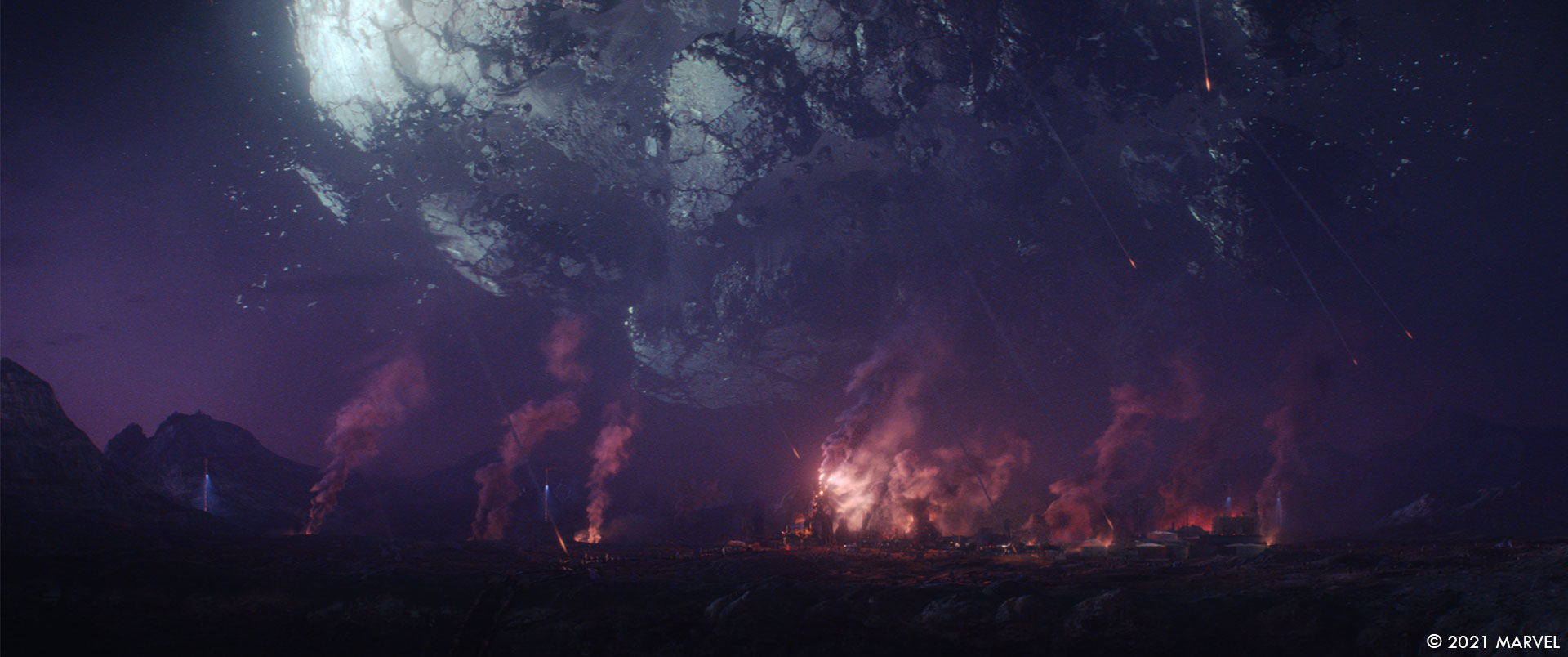
Which shot or sequence was the most challenging?
The destruction of the city of Shuroo was ultimately the most challenging sequence in “Lamentis,” and it’s also my personal favorite part of everything we did in the episode.
When we were first approached, we knew the filmmakers wanted to portray the destruction of the city in a long “oner” – one long, 4,500 frame shot, running over three minutes in length without any cuts – for dramatic impact. The sequence was shot as a series of shorter vignettes, each featuring large numbers of practical physical effects – practical smoke, fire, falling debris and mortar explosions were all used on set for dramatic effect. Once we received the footage, we began by isolating or removing those effects so we could replace the background. We then laid those practical effects back in and enhanced or replaced them entirely with new FX layers. It was a complex process, and certain portions of the shot have over sixty custom FX layers.
During filming, the actors and the hundreds of extras on set are all reacting to real physical events happening around them, and their amazing performances beautifully match all the digital mayhem happening on screen. The end result is both impressive to see, and a great dramatic moment for the series.
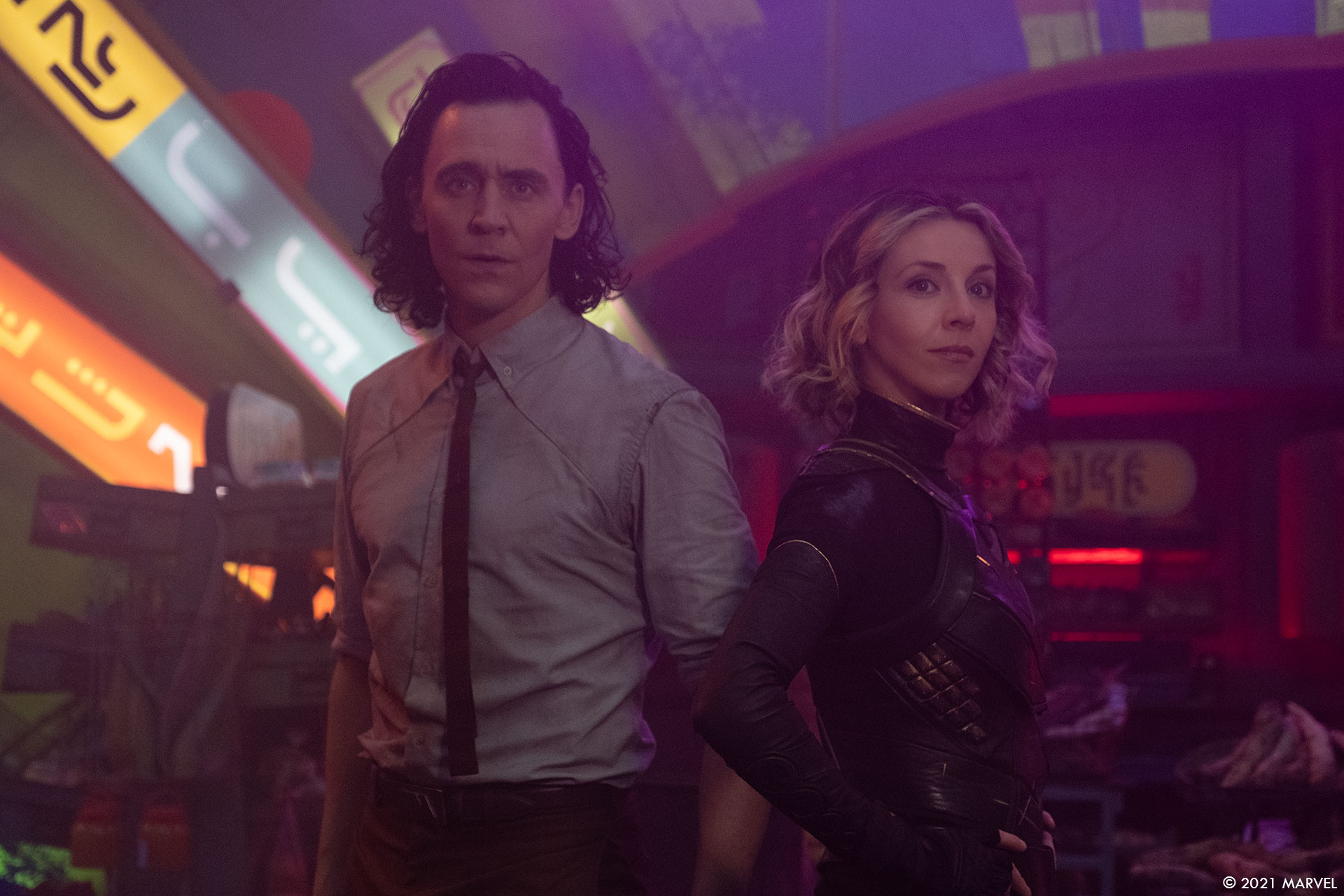
Is there something specific that gives you some really short nights?
Nothing really stood out that was unique to this project. It was impossible to ignore the pandemic as we all worked from home, but Digital Domain was ahead of most when it came to transitioning from office work to remote. It was certainly a major change, but the quality of the work remained consistent throughout.
What is your favorite shot or sequence?
The destruction of Shuroo is my favorite sequence, but some of my favorite shots are the wide establishing shots of the alien landscape. Those were all created by our environments team, and composited by our talented Montreal team under the direction of Montreal Compositing Supervisor Jeremy Ezekiel.
What is your best memory on this show?
Throughout the entire shoot, we were working from home. We chatted regularly, but more often than not it was without video. Then in December, on the last day of work before we all left on break, our producer Gayle Munro organized an “ugly sweater” Christmas party. It was the first time pretty much everyone on our production team all had their cameras on at the same time. For the first time in months I got to see everyone’s smiling face at the same time. It made my day.
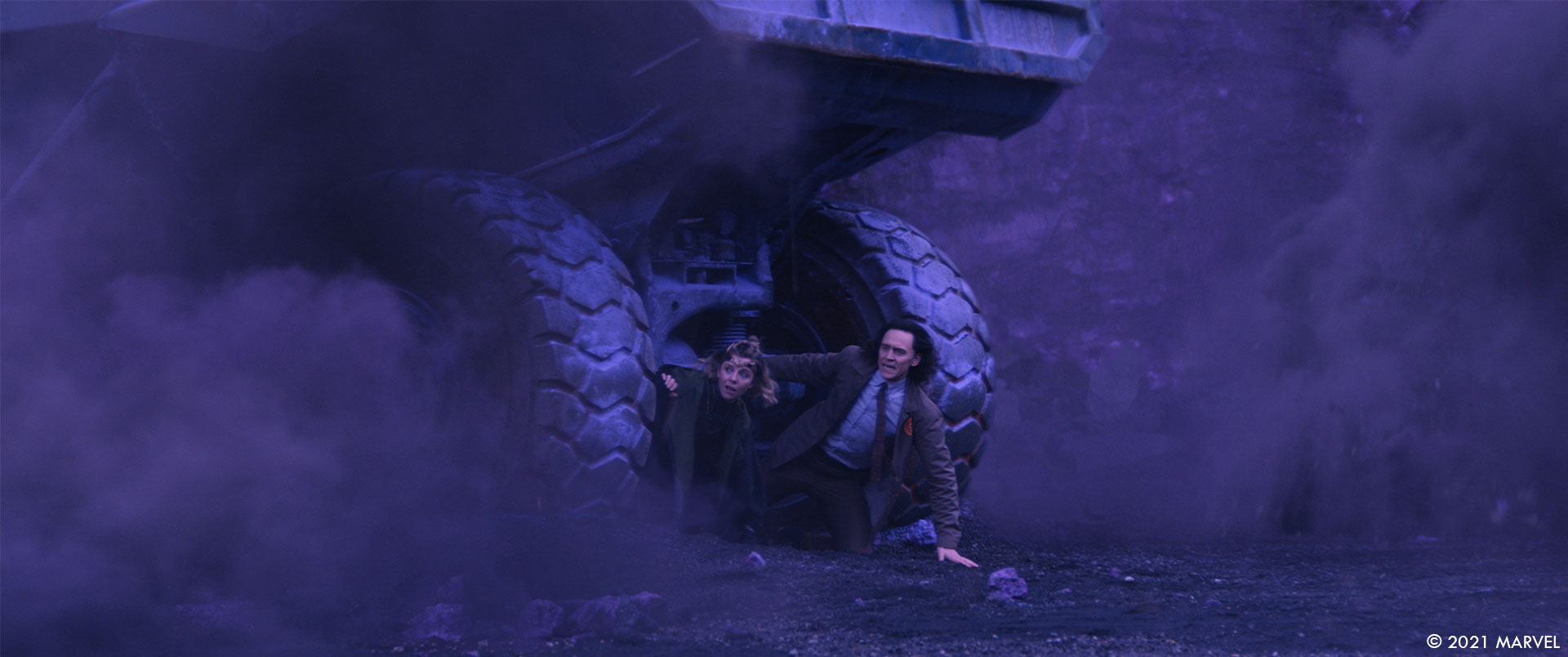
How long have you worked on this show?
About fourteen months, with asset creation and shot work lasting twelve months.
What’s the VFX shots count?
In total, we were initially tracking around 500 shots. That was later reduced to just under 300 after story revisions and omits.
What was the size of your team?
The size of our team fluctuated constantly throughout the project, so it’s tough to put an exact number on it. Staff from all of our five studios – India, China, the US and both Canadian studios – contributed to the project.
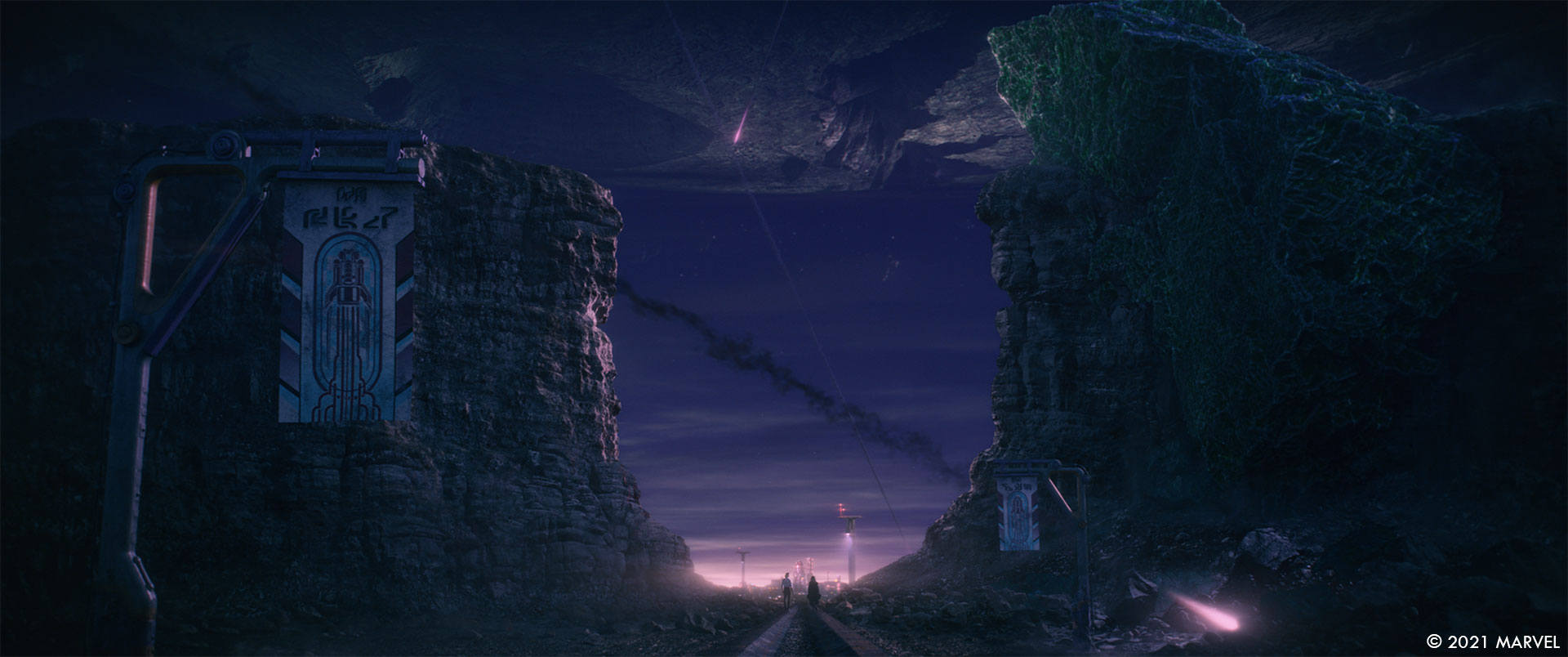
What is your next project?
For Digital Domain, our features group recently finished work on Free Guy and Shang-Chi and the Legend of the Ten Rings. The episodics group has several projects on the way as well, including a few that are unannounced.
What are the four movies that gave you the passion for cinema?
I would say my passion for cinema was cultivated from years of watching Elwy Yost’s Saturday Night At The Movies. I’m a huge fan of projects that use a variety of practical, in-camera and post effects to tell a compelling story, like Stanley Kubrick’s 2001: A Space Odyssey (1968); Caro and Jeunet’s Delicatessen (1991); Ghostbusters (1984) and Airplane! (1980).
A big thanks for your time.
// Loki – VFX Breakdown – Digital Domain
WANT TO KNOW MORE?
Dan Deleeuw: My interview of Overall VFX Supervisor Dan Deleeuw.
Disney+: You can now watch Loki on Disney+
© Vincent Frei – The Art of VFX – 2021





